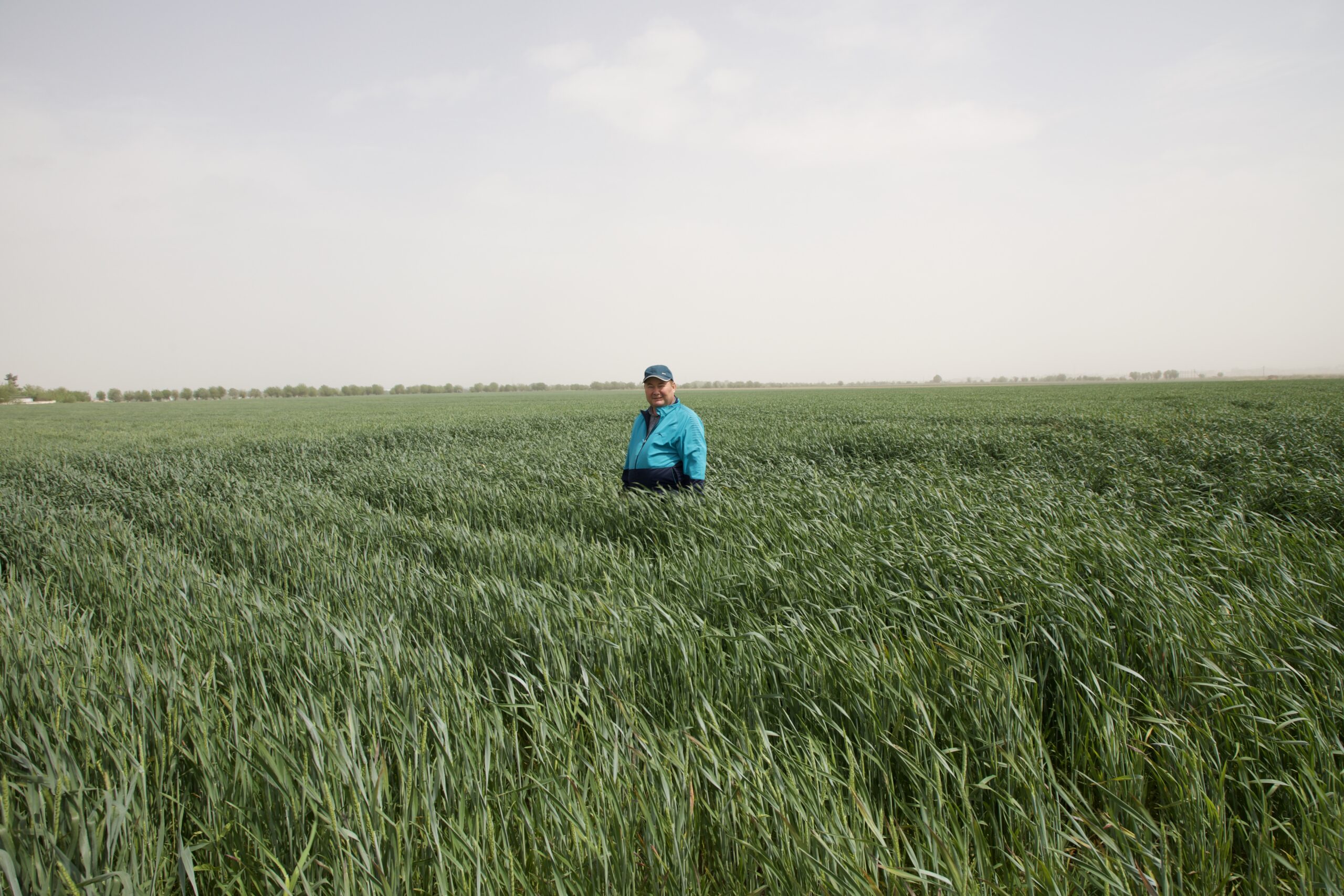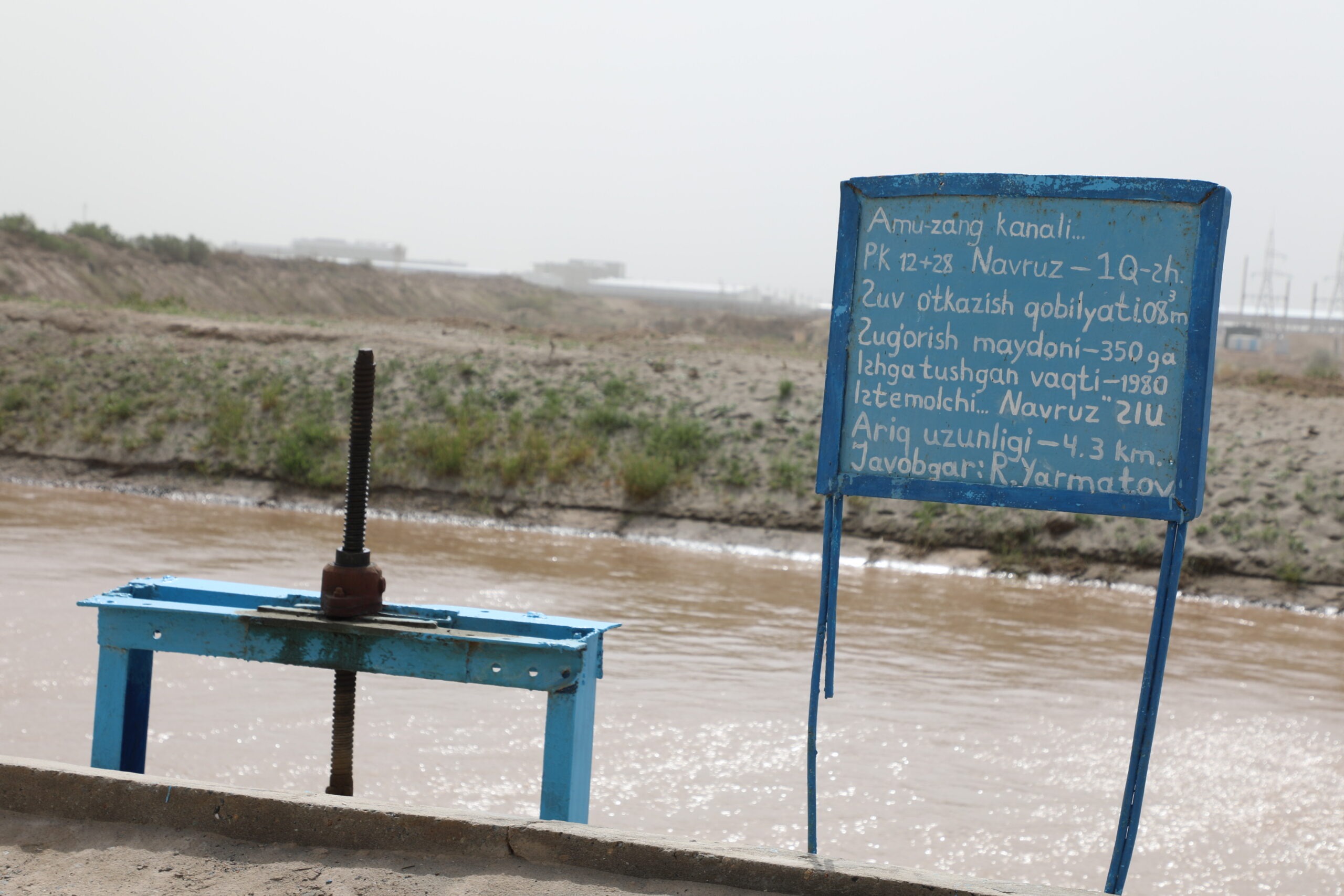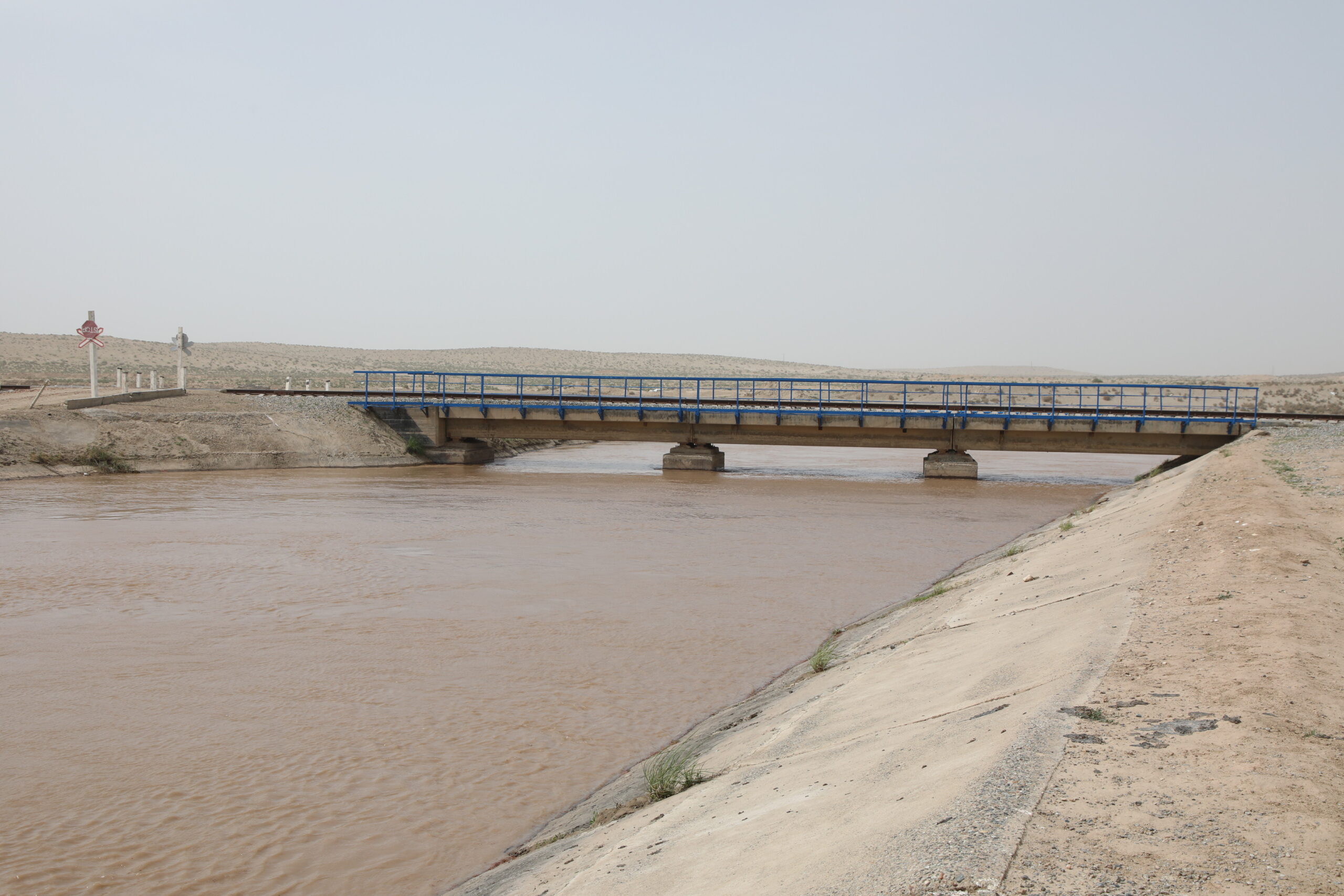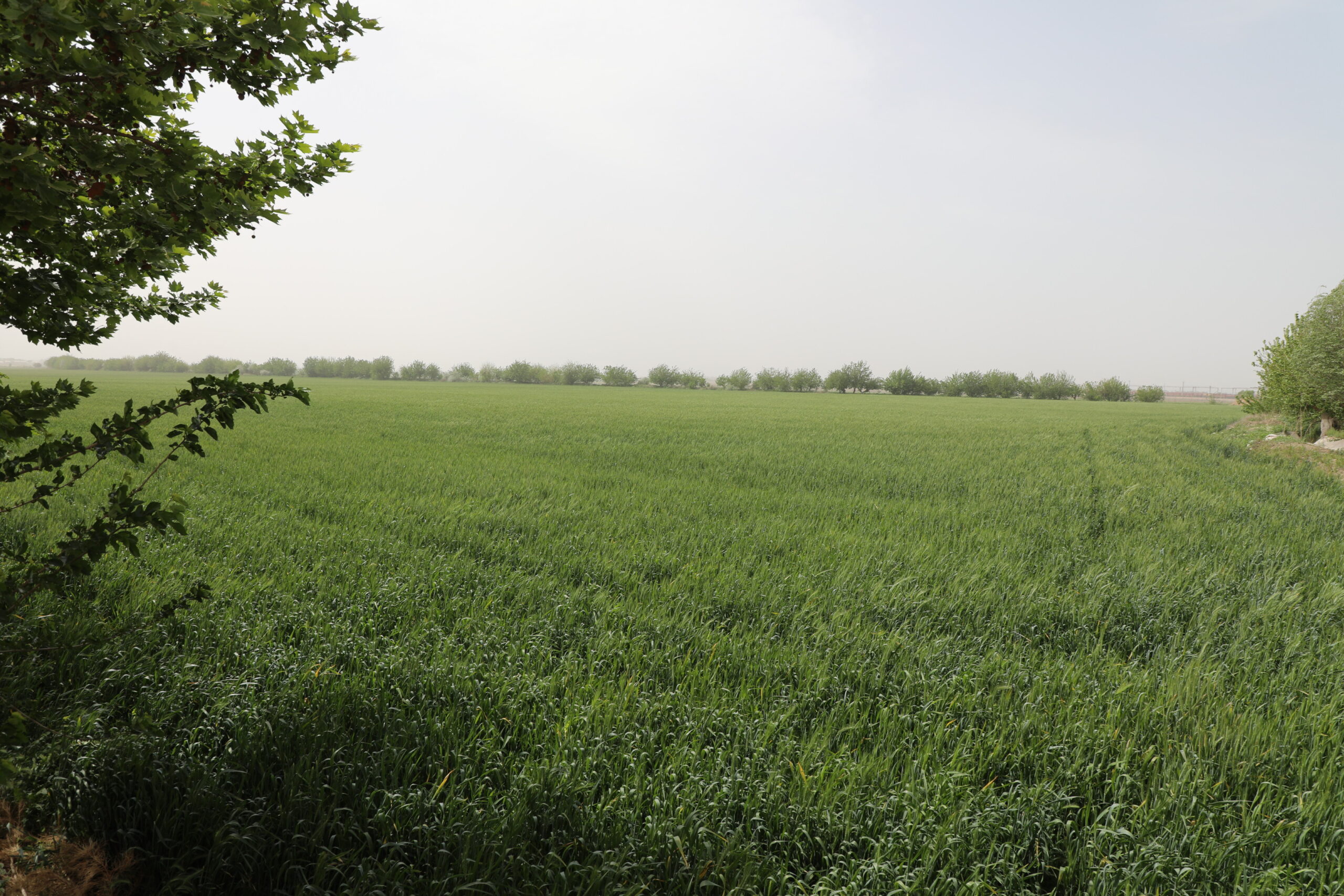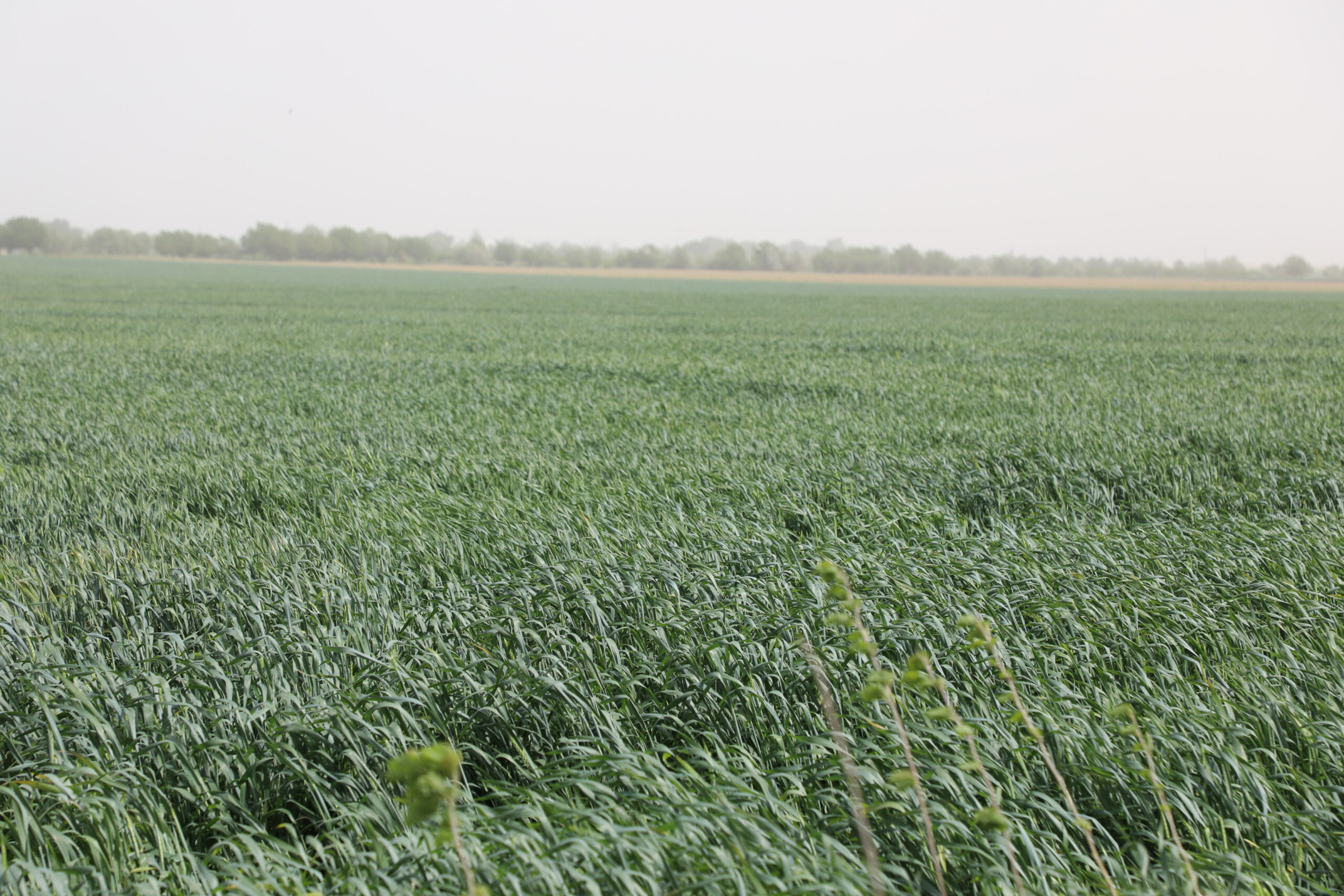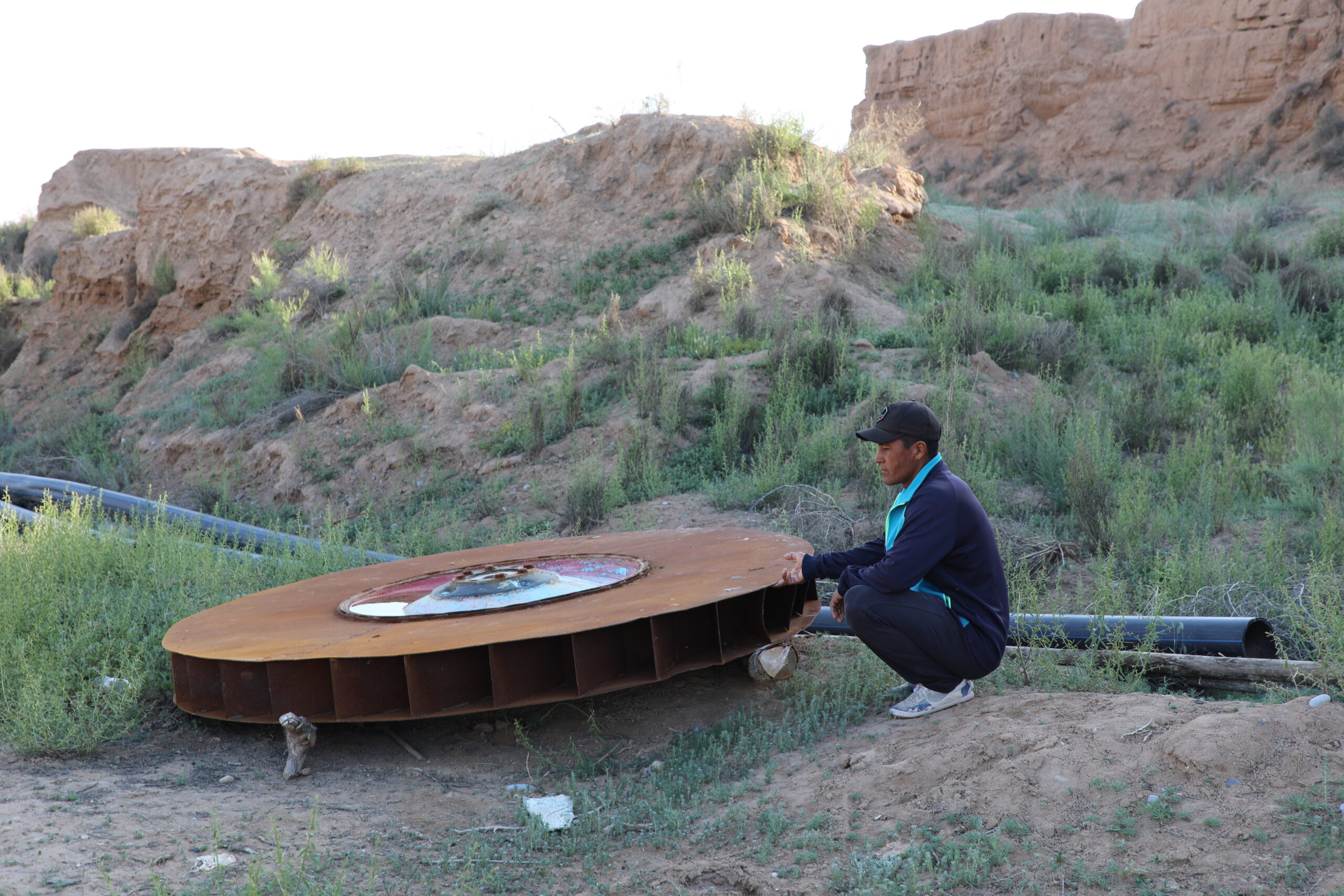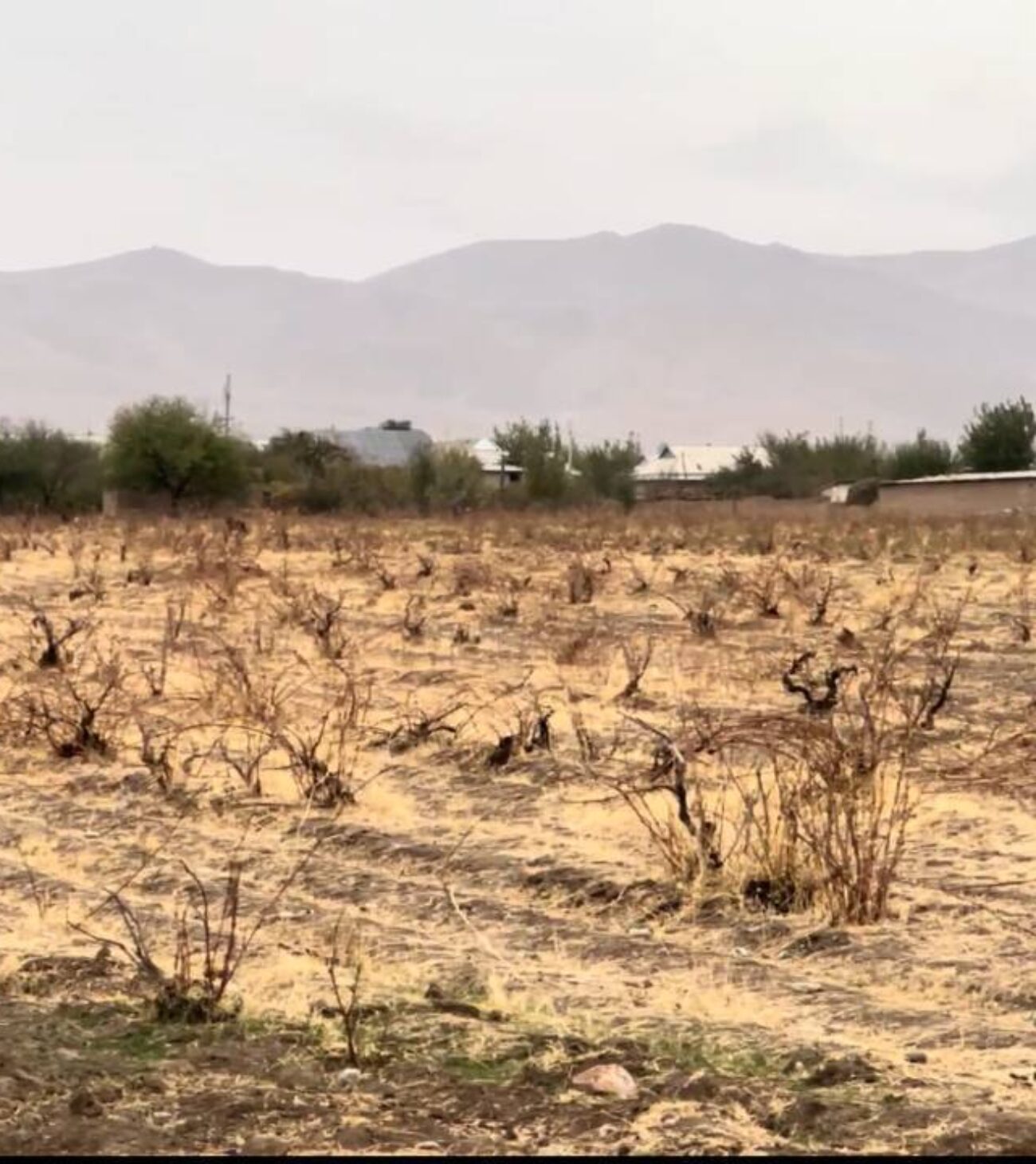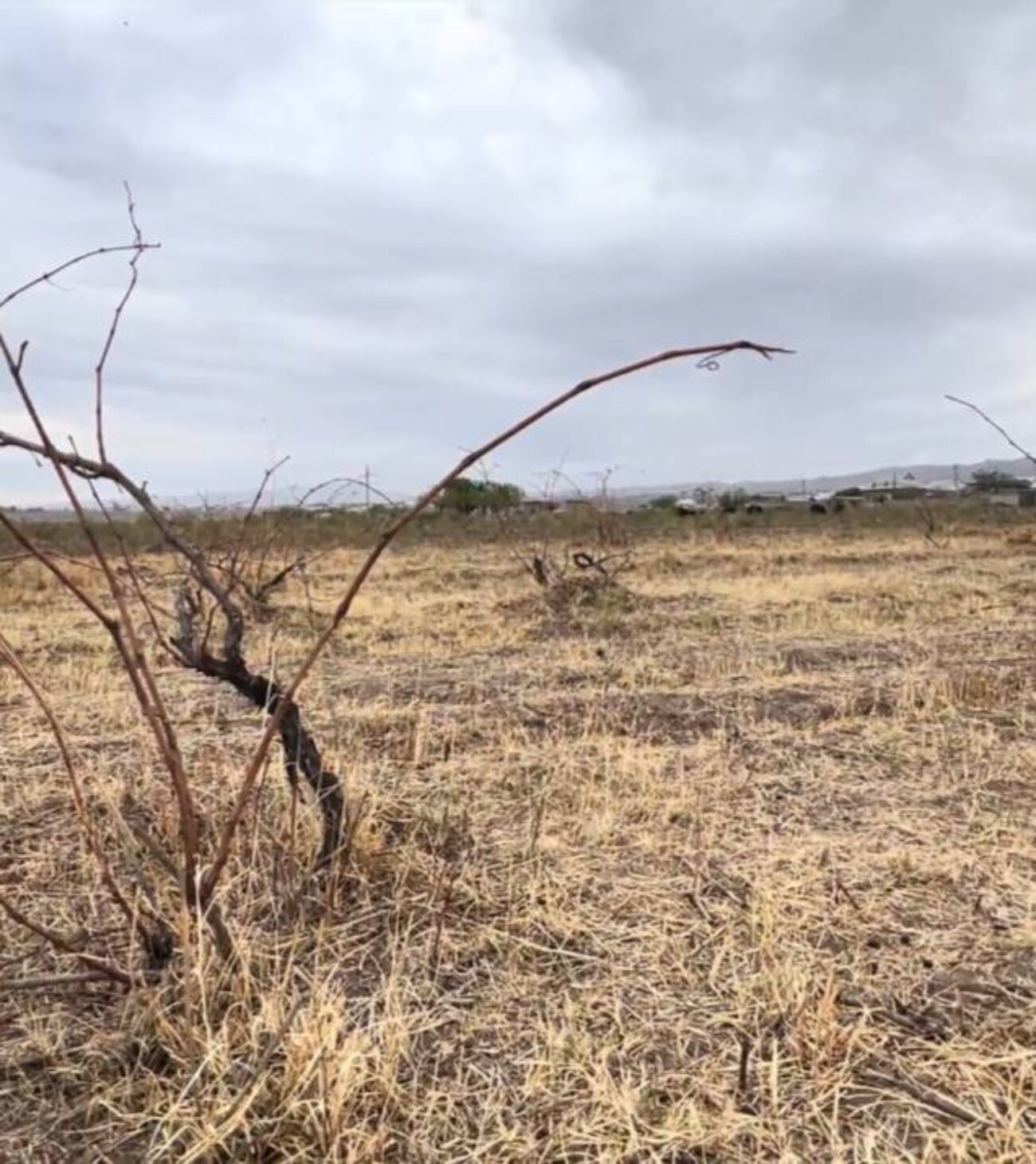CABAR.asia correspondent visited the border area between Uzbekistan and Afghanistan to see how the construction of the Qosh Tepa Canal by Afghanistan is affecting the irrigation system in Uzbekistan already.
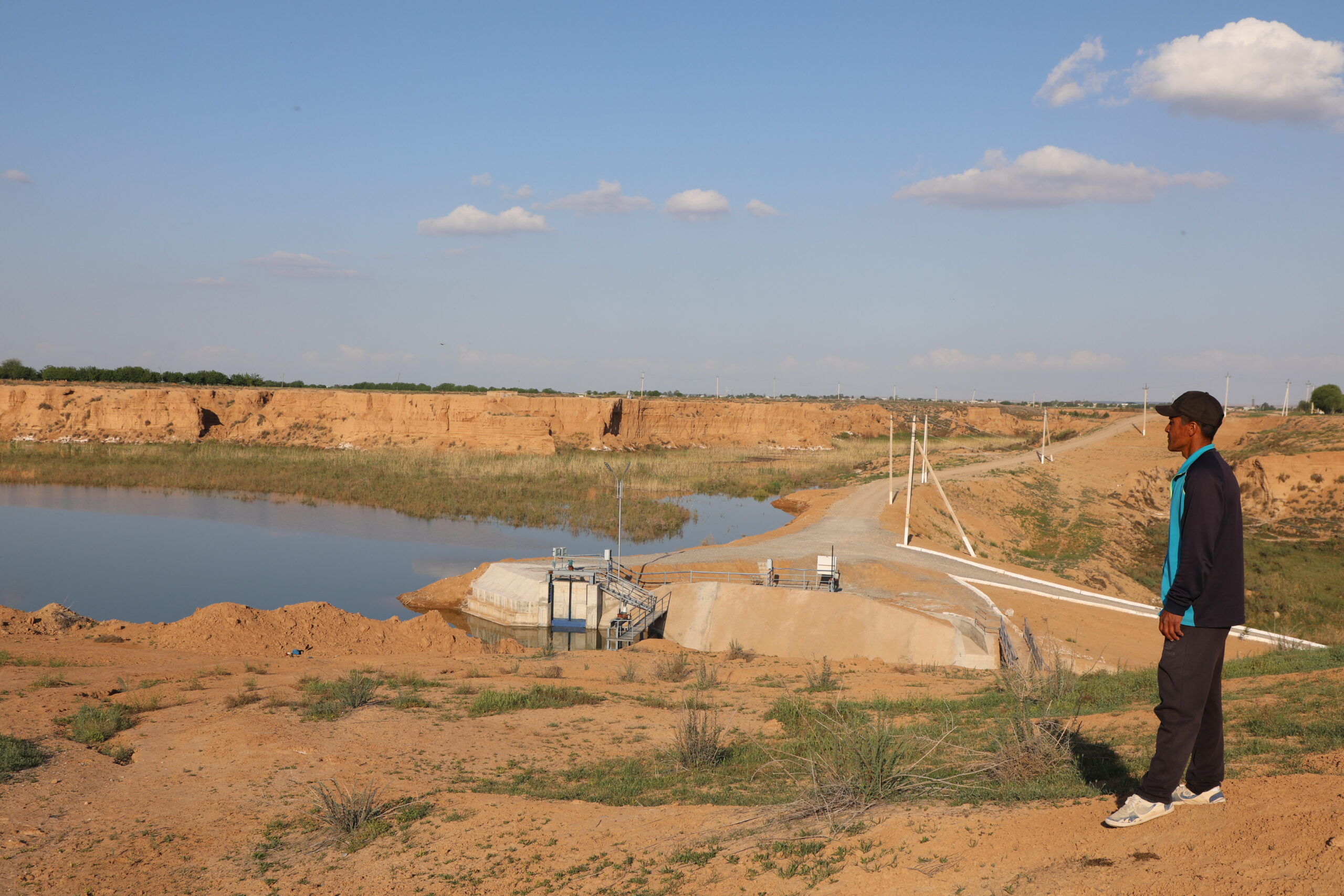
Amid global climate change and worsening water shortages in Central Asian countries, the Qosh Tepa Canal construction on the Afghan side of the Amu Darya River valley causes particular concerns, especially in the countries located in the lower reaches of this river – Uzbekistan and Turkmenistan. The canal is 285 kilometres long and is expected to provide water to millions of Afghans suffering from regular droughts.
Construction of the canal actively began after the Taliban (recognised as a terrorist movement by many Central Asian countries) came to power on March 31, 2022. The first phase of this three-phase project was completed last September. On October 11, 2023, the ceremony of launching the second stage of its construction was held. Construction is expected to be fully completed by 2028.
The Amu Darya is the largest river with the largest volume of water in Central Asia. Its length is 2540 kilometres and the area is 309 thousand square kilometres.
According to a special document by the Ministry of Water Resources of Uzbekistan, after the launch of the Qosh Tepa Canal, the Taliban will be able to receive an additional 4-4.5 billion cubic metres of water from the Amu Darya annually.
Meanwhile, according to the Ministry of Water Resources of Uzbekistan, now, with the annual water withdrawal limit from the Amu Darya and Syr Darya river basins being 64 billion cubic metres, the country receives 20% less water than the established limit allows.
The volume of water use in the Surxondaryo region, according to the Ministry of Water Resources, has decreased by 16.7% over the past 10 years.
Surxondaryo region of Uzbekistan is located on the bank of the Amu Darya River while the Balkh province of Afghanistan is on the other side. The Qosh Tepa Canal begins in this province. The residents of Afghanistan suffering from war and internal conflicts for many years are also facing an unprecedented humanitarian crisis and water shortages.

While not challenging the Afghans’ right to the water of the Amu Darya River, the experts in Uzbekistan are concerned that the lack of advanced canal construction methods could significantly increase the loss of water from this transboundary river leading to even greater problems within its basin.
According to the Taliban’s plans, the Qosh Tepa Canal should supply water to three provinces in northern Afghanistan: from Balkh through Jowzjan to the Andkhoy district of Faryab province. Due to the long-lasting conflicts in Afghanistan, the water supply system has failed to function. In the 1970s, 3.5 million hectares of land were cultivated in Afghanistan but by now, this number has decreased to 1.5 million hectares. Therefore, the development of wastelands and the irrigation system is of great importance for Afghanistan.
Despite the Surxondaryo region’s proximity to the Amu Darya banks, the farmers here, who have suffered from water shortages for many years, fear that their situation will worsen if the Qosh Tepa Canal starts operating.
Termez district of the Surxondaryo region of Uzbekistan is located right by the river. It borders with the Balkh province of Afghanistan in the south across the Amu Darya River and with the Khatlon region of Tajikistan in the east.
This district is the first location in Uzbekistan for water withdrawal from the Amu Darya through the Amu-Zang canal.
More than 70 farms grow grain and cotton on the lands of the Termez district.
The farmers living in this district worry about the construction of the Qosh Tepa Canal in Afghanistan. They believe that if it is fully constructed, the volume of water in the Amu Darya will decrease in Uzbekistan, which will lead to even greater problems for the country’s farmers.
Kamoliddin Kosimov, 43, owns the farm “Farovon yangi arik”, which is located 200 metres from the Uzbek-Afghan border.

Kamoliddin Kosimov is a hereditary farmer. His father worked on these lands for many years and Kamoliddin has been working here for more than 17 years now. He grows cotton and grain crops on 72 hectares of land.
Kosimov says that they have not experienced any problems with water so far. However, he worries that if the Qosh Tepa Canal construction in Afghanistan is completed, farmers in Uzbekistan living downstream could be left without water.
“Our land is located 200 metres from the Afghan border. We are the first to take water from the Amu Darya. Therefore, we do not fear that the water in the river will decrease,” he says.
The farmer said that he earned a net profit of 200 million sums ($157.45 thousand) from his activities last year.
“We fulfil the state plan for cotton and grain harvesting annually. Other farmers from the district are concerned that if the Qosh Tepa Canal is built, the water will dry up. Since the water flows well, we have not switched to drip irrigation yet. If the water in the Amu Darya decreases, we plan to use a drip irrigation system,” Kosimov said in a CABAR.asia interview.
However, even though they do not experience any particular problems with irrigating their land, annual restrictions on water use are intensifying.
“Previously, we used water from the Amu Darya without restrictions. Now, we cannot use it that way. Earlier, we irrigated our lands with water from the Amu Darya as much as we wanted but now, each farmer takes turns irrigating the lands. We water cotton 4 times a year and grain – 5 times a year. We also pay water tax. Last year, I paid water tax for 30 million sums (about $3 thousand),” says Kosimov.
However, not all farmers have the same situation as here, he notes with regret.
“Since the water in the Amu Darya decreases from year to year, it is becoming increasingly difficult to deliver river water to other districts, for example, to other areas of the Termez district, to the Angor, Muzrabod, and Sherobod districts,” he says.
Water Flow in the Amu-Zang Canal Decreases
Water from the Amu Darya is delivered to this and other districts of the Surxondaryo region by the Amu-Zang canal. Water from it is directly supplied to the Termez, Jarkurghon, and Kumkurgon districts, and then, to the Angor and Muzrabod districts. The last part of the water goes to the Sherobod district.
According to Uzbek hydrometrologists, the water level in the Amu Darya River decreases every year.

Dildora Abdurakhimova works as a water controller at the Termez gauging station near the city of Termez. Her task is to regularly measure the volume of water entering the territory of Uzbekistan from the Amu Darya.
“I have everything written down in my notebook. The flow is decreasing. There is also a risk of further decrease if the Qosh Tepa Canal is launched,” she notes.
Abdukarim Rasulov, head of the operational department of the Amu-Zang canal also confirmed that the water flow in the Amu Darya has already decreased.
“Last year, we received 75 cubic metres of water per second but now, after the Qosh Tepa Canal construction, we receive 48 cubic metres per second. There are concerns that after the Qosh Tepa Canal launch, the water level in the Amu-Zang canal will also decrease. The most important thing now is to switch to water-saving technologies. There is no other way. The problem of water shortages in the world is getting worse every year. Therefore, it is necessary to switch to water-saving technologies,” he says.
We Suffer Without Water
The last part of the Amu Darya water flows to the Sherobod and Oltinsoy districts of the Surxondaryo region through the Amu-Zang canal. Sherobod district is located in the north of the region, 61 kilometres from the centre of the region – Termez city. Workers on more than 500 farms in this district make their living by farming, growing grain and cotton, and selling their harvests to the government.
Sobir Karimov lives in the Gyulchinor village of the Sherobod district, with a population of more than ten thousand people. Many people living here can no longer work in agriculture because water problems have worsened here in recent years.
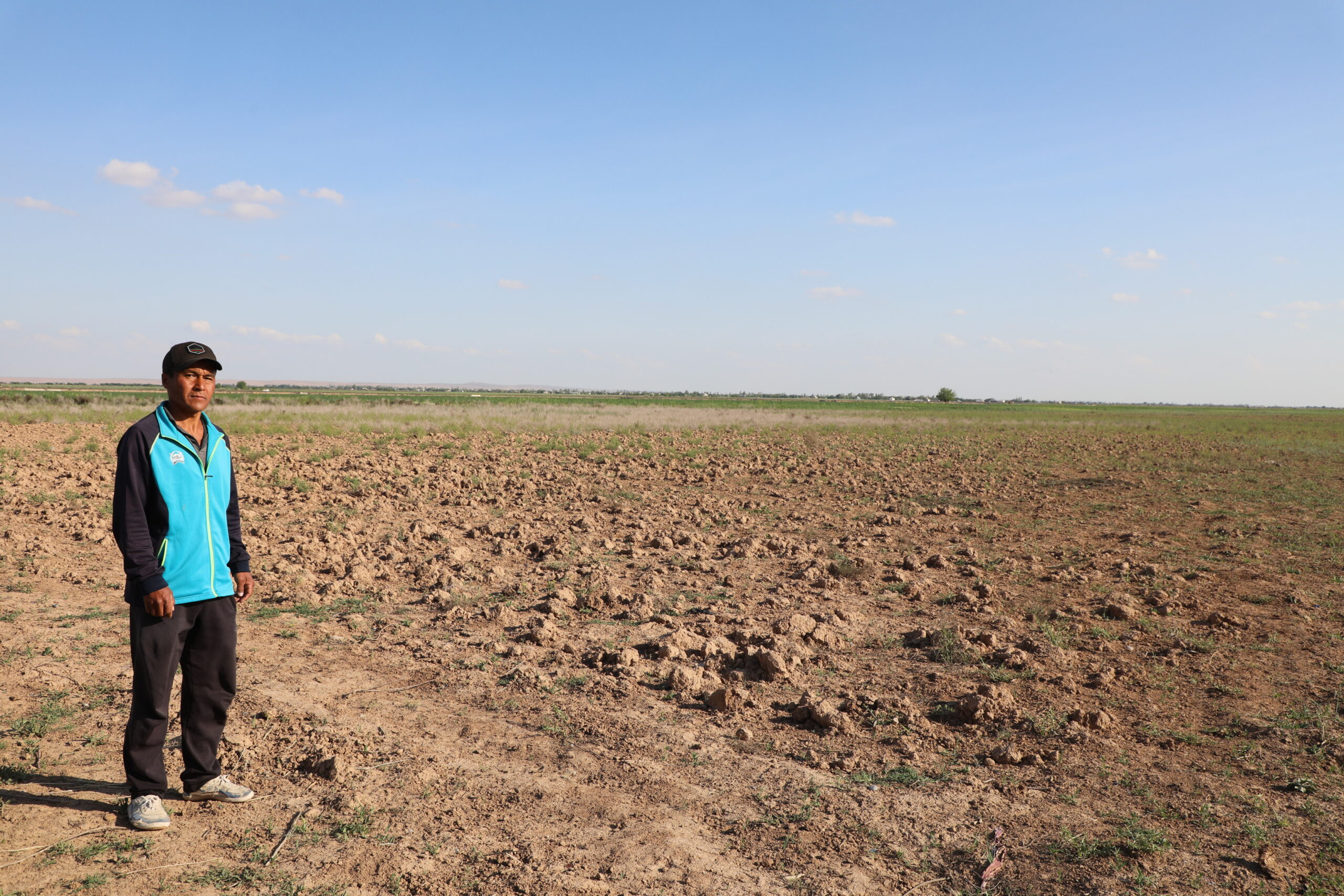
“We did not have problems with water before. In recent years, it has been difficult to deliver water to our village through the Amu-Zang canal,” says Karimov.
The farmer said that he spent 80 million sums (more than $6 thousand) to supply water to the Gyulchinor village but this project did not bring any results since water stopped flowing to their village completely.
“There is a lot of land in our village. However, we cannot use it because there is no water. We do not even know what to do. I bought a technical device for water supply to irrigate this land for 80 million sums. It did not work. If there was water in our village, people would not go to work in Russia. They would work in agriculture here. I have contacted many places regarding the water problem. However, this does not work. We do not know what to do,” Karimov complains.
Similar problems with water are observed in the Oltinsoy district, located north of Sherobod.
Ismoil Artykov, 60, a resident of the Khojasoat village of this district, also made a living from agriculture previously. Now, problems with irrigation water put farmers like him in a difficult situation.

“I spent 20 million sums on my 14 hundred square metres of land and went broke. There was no harvest due to lack of water,” he said.
The Khojasoat village, once famous for its vineyards, is now turning into a desert. Due to lack of water, the canals dry up and the village becomes empty.
“In our village, which supplied grapes to Moscow in the 1980s, the situation is very bad now. 600 hectares of vineyards dried up. If the Qosh Tepa Canal starts working, we will probably have to move from here,” Artykov says.
Negative Impact on the Natural Ecosystems of the Amu Darya Basin
The environmental scientists are also concerned that, in addition to irrigation problems, the construction of a new large-scale canal in the region could harm flora and fauna and affect the natural ecosystems of the Amu Darya River basin.
Rakhmatilla Pardaev, head of the Surxondaryo Hydrometeorology Department, says that if the water in the Amu Darya drops to dangerous levels, it will affect the level of humidity in this arid region.

“As humidity decreases, air dryness increases. This has a very negative impact on plants. Desertification will intensify. As desertification intensifies, various chemical elements in dust blown by the wind will negatively affect human health,” he said.
However, what is particularly alarming, he said, is that the canal is being built without considering these consequences.
“I believe that the Taliban are not fulfilling the requirements of the canal construction. During canal construction, it is important to concrete it. The Qosh Tepa Canal is being built without concrete. As a result, water seeps into the ground. So much water is wasted just like that. The Qosh Tepa Canal will not only cause water shortages, it may increase the negative impact of climate change,” he said.
Measures Are Taken but Afghanistan’s Interests Are Not Considered Yet
The government of Uzbekistan takes active steps to reduce the risks of water shortages urging the population to switch to new technologies for land irrigation and trying to come to an agreement with the current government of Afghanistan.
The water-saving technologies were introduced on 30 percent of the 4.3 million hectares of irrigated land. However, in some particularly arid regions, this figure is much lower.
During a video conference meeting on November 29, 2023, the President of the country Shavkat Mirziyoyev instructed to switch to an emergency water-saving system for a year.
Among other measures to prevent water losses, Mirziyoyev instructed to construct concrete canals and ditches in the country within a year.
Meanwhile, due to heavy rains in the spring this year, the Amu Darya and Syr Darya rivers are predicted to be full and have a sufficient volume of water.
The Minister of Water Resources of Uzbekistan Shavkat Khamroev stated that five Central Asian countries have agreed on limits on water consumption from transboundary rivers.
So far, Afghanistan has not joined any regional or international agreements on the use of transboundary river waters.
Some analysts inside the country express concerns that it will be difficult to reach an agreement with the current Afghan government and predict that the Taliban could use the Qosh Tepa Canal as a weapon against their neighbours.
However, other experts in Central Asia believe that Afghanistan has every right to withdraw its share of water from the Amu Darya River and will do it.
For example, during the CABAR.asia regional expert meeting on the problem of the Qosh Tepa Canal construction, an expert on energy and water use from Tajikistan Hamidjon Arifov said that Afghanistan has every right to take as much water as it needs.
“We are talking about global processes; this is also important. The Central Asian countries are on different social levels than Afghanistan. They have their pressing problems, we have others. They need to feed people, distract them from growing poppies on opium plantations. Afghans are not interested in general discussions about ecological consequences, they need water and they will take it whether we want it or not. That is why we need to negotiate,” said Hamidjon Arifov.


